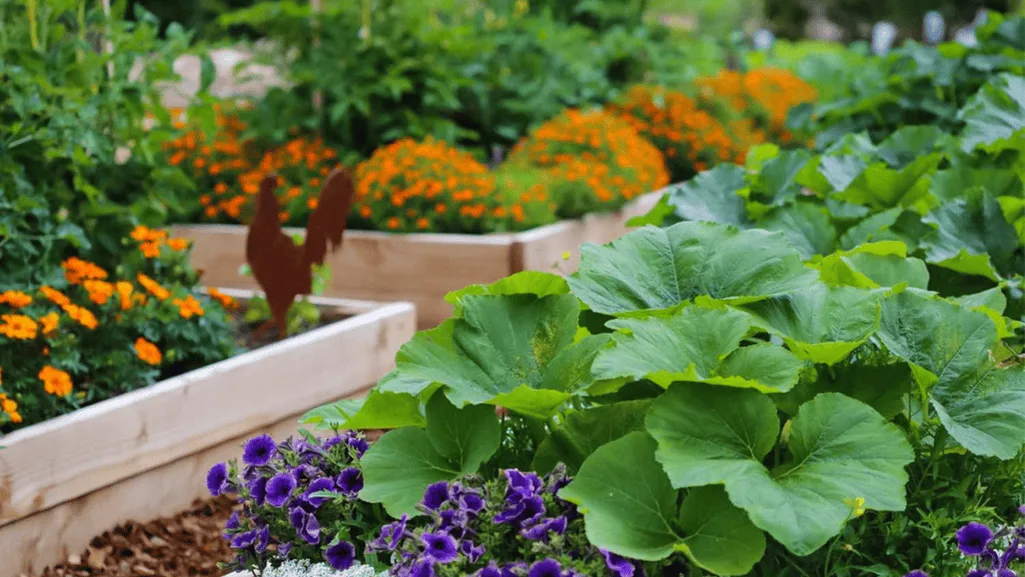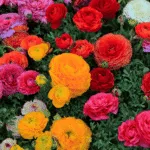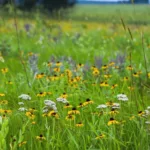
Beautiful flowers gardenia Plants For Your homes

Urban living doesn’t mean you have to give up gardening. With a bit of creativity and the right methods, you can turn even the smallest areas into lush vegetable gardens. There are many ideas, like raised bed gardening, vertical gardening, and container gardening, to help urban gardeners use their limited outdoor space well.
Take a look at a front garden that’s only 8 feet wide. It uses space wisely to grow veggies and fruits in raised beds. By mixing perennial flowers, vegetables, herbs, and fruits, this garden shows how to make the most of a small area. Raised beds have also improved plant growth and soil quality, making gardening more successful.
Container gardening is another great option for city living. Growing different plants in pots at your home’s front can make cooking easier. Even balconies and patios can become green spaces with the right plants and gardening techniques, like raised beds and portable planters.
Urban gardening in small spaces brings many benefits. It helps the environment and saves money. By using compact gardens, city folks can grow their own food and help the planet.
Urban gardens use much less water than lawns. A small garden can save thousands of gallons of water each year. Using efficient irrigation and plants that need less water helps save even more.
Growing your own food in the city cuts down on carbon emissions. It means less need to drive to the store. Plus, plants absorb carbon dioxide and make oxygen, making the air cleaner.
Urban gardens use natural ways to keep pests away. Companion planting is a key method. For example, marigolds can keep aphids and whiteflies off your veggies. This way, you avoid harmful chemicals and create a healthier garden.
Starting a garden might cost some money at first. But, it saves a lot of money in the long run. You get fresh, healthy food right outside your door. This means better taste and more nutrients, and you save money on groceries.
| Benefit | Impact |
|---|---|
| Water Conservation | 66% less water usage compared to lawns |
| Carbon Emissions Reduction | Decreased need for long-distance food transportation |
| Natural Pest Control | Companion planting deters harmful insects |
| Fresh Produce Savings | Reduced grocery bills and minimized food waste |
Urban gardening in small spaces is great for the planet and your wallet. It uses less water, cuts carbon emissions, and keeps pests away naturally. By gardening, you make your space better and help the world at the same time.
In cities where space is tight, vertical gardening is a smart way to grow more. It lets you grow lots of veggies, fruits, and flowers without taking up too much room. This method also makes gardening easier by reducing weeding, improving air flow, and keeping pests away.
Vertical gardens help plants breathe better, which fights off diseases. Many plants do well here, like cucumbers and peas. About 80% of the plants that grow well in vertical gardens are climbers, making them perfect for this method.
Walls and fences are great for vertical gardens. You can use planters and trellises to turn them into gardens. Pick strong materials like wood or metal for your setup. Make sure your plants get enough sunlight and water.
Hanging baskets are great for small spaces like balconies. Hang them from hooks or brackets. Choose plants like strawberries or cherry tomatoes to make your space look good and grow more.
“I love using hanging baskets to grow my favorite herbs and cherry tomatoes on my apartment balcony. It’s amazing how much you can produce in such a small space!” – Sarah, urban gardener
Trellises and climbing plants are key for vertical gardens. They help plants grow up and produce more. You can use different types of trellises, like wooden or metal ones.
Choose plants that fit your space and needs. Some good options include:
| Vegetables | Ornamental Plants |
|---|---|
| Pole Beans | Clematis |
| Cucumbers | Jasmine |
| Peas | Climbing Roses |
| Squash | Wisteria |
Vertical gardening turns small spaces into green oases. It boosts your garden’s look and productivity. Try out different setups and plants to find what works best for you.
Container gardening is perfect for city folks who want to grow their own food and flowers. It works great on small balconies, patios, or rooftops. By picking the right containers, soil, and pots, your urban garden can thrive.
There are many materials for containers, like plastic, terracotta, and even old items. Each has its own good and bad points. For example, plastic is strong but terracotta dries out fast. Think about what your plants need and what you like when picking containers.
The right potting soil is key for a good container garden. Don’t use garden soil as it’s too heavy. Instead, choose a mix that drains well, like peat moss and perlite. You can make your own mix to save money and tailor it to your plants’ needs.
| Vegetable | Minimum Soil Depth |
|---|---|
| Chives, Lettuce, Radishes, Salad Greens, Basil, Coriander | 4-5 inches |
| Bush Beans, Garlic, Kohlrabi, Onions, Asian Greens, Peas, Mint, Thyme | 6-7 inches |
| Pole Beans, Carrots, Chard, Cucumber, Eggplant, Fennel, Leeks, Peppers, Spinach, Parsley, Rosemary | 8-9 inches |
| Beets, Broccoli, Okra, Potatoes, Sweet Corn, Summer Squash, Dill, Lemongrass | 10-12 inches |
Good drainage stops waterlogging and root rot. Make sure your pots have holes and use trays to catch water. Self-watering planters help keep moisture steady, but remember, container gardens need more water, especially in summer.
Container plants also need regular food. Use a balanced fertilizer every 2-3 weeks. Organic options like fish emulsion are good for your plants and the planet.
Container gardening lets you move plants for better sunlight, perfect for cities with little space and changing light.
Choosing the right vegetables is key for a small garden. Look for compact varieties that grow well in tight spaces. These are perfect for urban gardens and raised beds. They thrive in containers, small plots, and hanging baskets, ideal for those with little room.
Tomatoes are a must-have in many gardens. Dwarf tomato plants are great for small spaces. Cherry tomatoes, like Cherry Cascade, can produce hundreds of fruits in a basket or bed.
Other options include Patio tomatoes and Husky Cherry Red tomatoes. They are known for their high yields and small size.
Peppers are versatile and can grow in small areas. Compact chile peppers, like Black Hungarian and Patio Fire, add beauty and flavor. Mini bell peppers, such as Baby Belle, are perfect for containers and can be picked at different stages for color.
Planting distances for these compact pepper varieties range from 12″ to 18″ apart, making them ideal for small gardens and containers.
Lettuce and leafy greens are great for small gardens. They can be picked leaf-by-leaf, extending the harvest. Compact varieties like Little Gem and Merlot are perfect for containers or small beds.
Mesclun mix and baby lettuce blends offer a variety of flavors and textures in a small space.
| Vegetable | Variety | Planting Distance |
|---|---|---|
| Tomatoes | Cherry Cascade, Patio, Husky Cherry Red | 12-24″ |
| Peppers | Black Hungarian, Patio Fire, Baby Belle | 12-18″ |
| Lettuce | Little Gem, Merlot, Lolla Rossa | 6-12″ |
| Mesclun Mix | Various blends | 2-4″ |
When picking compact vegetables, check the mature size on seed packets or tags. By choosing the right plants, you can enjoy a diverse harvest, even in small spaces.
Edible flower gardening adds charm and flavor to your urban garden. You can use nasturtiums, violas, calendula, and signet marigolds. They make your garden look great and add tasty garnishes to your meals.
Nasturtiums are great for their bright colors and easy growth. They bloom all summer if you keep picking them. Their leaves add a peppery taste to salads.
Violas are loved for their delicate petals in many colors. They’re beautiful in gardens and as garnishes for desserts and drinks.
Calendula, or pot marigold, brings a sunny feel to gardens. Its petals can color and flavor rice, soups, and beauty products. Signet marigolds, like Lemon Gem, have ferny leaves that smell like lemon. They’re great in teas or salad dressings.
Mixing vegetables and flowers in garden beds makes your urban garden look better. A cut flower garden adds color and diversity, even when veggies aren’t in season.
Most edible flowers grow well from seed. They’re great with veggies and herbs, making your garden more beautiful. Here are some ideas for using edible flowers:
| Edible Flower | Color Range | Flavor Profile | Culinary Uses |
|---|---|---|---|
| Nasturtium | Yellow, orange, red | Peppery, slightly spicy | Salads, garnishes, stuffed flowers |
| Viola | Purple, blue, yellow, white | Sweet, subtle | Garnishes, desserts, drinks |
| Calendula | Yellow, orange | Tangy, slightly bitter | Rice dishes, soups, tea |
| Signet Marigold | Yellow, orange | Citrusy, lemony | Salads, dressings, tea |
Edible flowers make your garden beautiful and attract bees, butterflies, and hummingbirds. These pollinators help your veggies grow well. So, edible flower gardening is good for both looks and function in your small garden.
Turning your balcony or patio into a garden is simpler than you think. With some creativity and the right steps, you can make the most of your small space. This way, you can enjoy fresh, homegrown food right at your doorstep. Here are some creative ideas to get you started.
Raised beds are great for balcony gardens. They give enough room for plants that don’t need deep roots and are light enough not to weigh down your balcony. When setting up your raised beds, keep these tips in mind:
Portable planters are perfect for patio gardens. They let you change your garden layout whenever you want. Here are some ideas for portable patio planters:
Herb gardens are perfect for small areas. Most herbs need little space and can be picked often. Here are some herb garden ideas:
| Herb Garden Solution | Benefits | Suitable Herbs |
|---|---|---|
| Window boxes | Easy to reach from inside, looks good | Basil, thyme, oregano, chives |
| Railing planters | Save space, plants get good support | Rosemary, sage, mint, parsley |
| Vertical wall pockets | Use vertical space, creates a living wall | Cilantro, dill, tarragon, lavender |
| Themed herb collections | Has a special mix for different cuisines | Italian blend, French blend, Asian blend |
“Growing your own food is like printing your own money.” – Ron Finley
By using these ideas for small gardens on your balcony or patio, you can enjoy fresh, tasty food right outside your door. Try different layouts and plants. Grow what you love to eat for a rewarding gardening experience.
 Companion Planting in Urban Vegetable Gardens
Companion Planting in Urban Vegetable GardensCompanion planting is a smart strategy for urban gardeners. It helps use space well and keeps plants healthy. By pairing plants, you can fight pests and help plants grow. Research shows 45% of small-space gardeners use this method to protect their crops.
Intercropping is a key technique in companion planting. It involves growing fast-growing crops like lettuce between slower-growing ones like tomatoes. This way, gardeners can make the most of their space. About 30% of small-space gardeners use intercropping to increase their harvest.
By choosing the right plants, your garden can be full of life and produce a lot of food. Here are some good pairings:
Some herbs and flowers can keep pests away naturally. Adding these to your garden can reduce the need for harmful pesticides. Here are some effective pest-repellent plants:
| Companion Plant | Pests Repelled |
|---|---|
| Marigolds | Nematodes, aphids, whiteflies |
| Nasturtiums | Aphids, whiteflies, squash bugs |
| Lavender | Moths, fleas, flies |
| Rosemary | Cabbage moths, bean beetles, carrot flies |
“Companion planting adds beauty to the garden, increases sustainability, and promotes healthier and more productive plants.”
Using pest-repelling herbs and trap crops like nasturtiums can protect your garden. It also attracts helpful pollinators. This makes your garden a healthy and thriving place.
Urban vegetable gardens can look amazing and still grow food. By using ornamental edible landscaping, or foodscaping, you can make your garden both beautiful and useful. It’s all about choosing the right plants and features that look good together.
Mixing vegetables with pretty plants makes your garden stand out. This method, called interplanting, makes your garden look better and attracts helpful bugs. Try growing colorful veggies like rainbow chard with flowers for a stunning look.
As an article on urban vegetable gardening suggests, growing different plants together can be very rewarding. This way, you get lots of food and a garden that looks great.
Companion planting is another smart trick. It lets you grow veggies that do well together and look good too. For example, the Three Sisters Gardening method pairs squash, beans, and corn for a win-win situation.
Even tiny gardens can be beautiful and productive with the right design. Vertical gardening is a great way to use space and add interest. Use trellises or pergolas for climbing plants, and hanging baskets for veggies without taking up ground.
Hardscaping, like raised beds, is key for a good look and function. These beds improve soil and make your garden look neat. Paths, seats, and fences can also make your garden more inviting and useful.
| Landscaping Element | Benefits |
|---|---|
| Raised Beds | Better soil conditions, structured layout, visually appealing |
| Vertical Structures | Maximize space, support climbing plants, add height and dimension |
| Companion Planting | Ensures vegetables grow well together, adds visual interest |
| Hardscaping Elements | Define spaces, contribute to overall aesthetic, enhance functionality |
When planning a small garden, think about sunlight, how close it is to your kitchen, and how it fits with your flower beds. A greenhouse, as mentioned in an article on backyard greenhouses, can extend your growing season and protect plants.
By using ornamental edible landscaping, vertical gardening, companion planting, and smart hardscaping, you can make your urban garden both beautiful and productive. With a little creativity and planning, your garden will be a stunning oasis that brings joy and fresh food to your life.
Urban gardening in small spaces brings many benefits to city folks. It helps them live more sustainably. By using creative small-space gardening tips, like vertical and container gardening, they can grow more with less water and less harm to the environment. This approach also means they can eat fresh, homegrown food and keep pests away naturally.
More and more people are turning their balconies, patios, and small yards into gardens. They choose plants that grow well in tight spaces, like dwarf tomatoes and herbs. Adding edible flowers and decorative elements makes their gardens not only useful but also beautiful.
The trend of growing food in small spaces is growing. With the right tools and a bit of creativity, anyone can start their own urban garden. This way, city folks can eat healthier, connect more with nature, and build stronger communities, one garden at a time.




